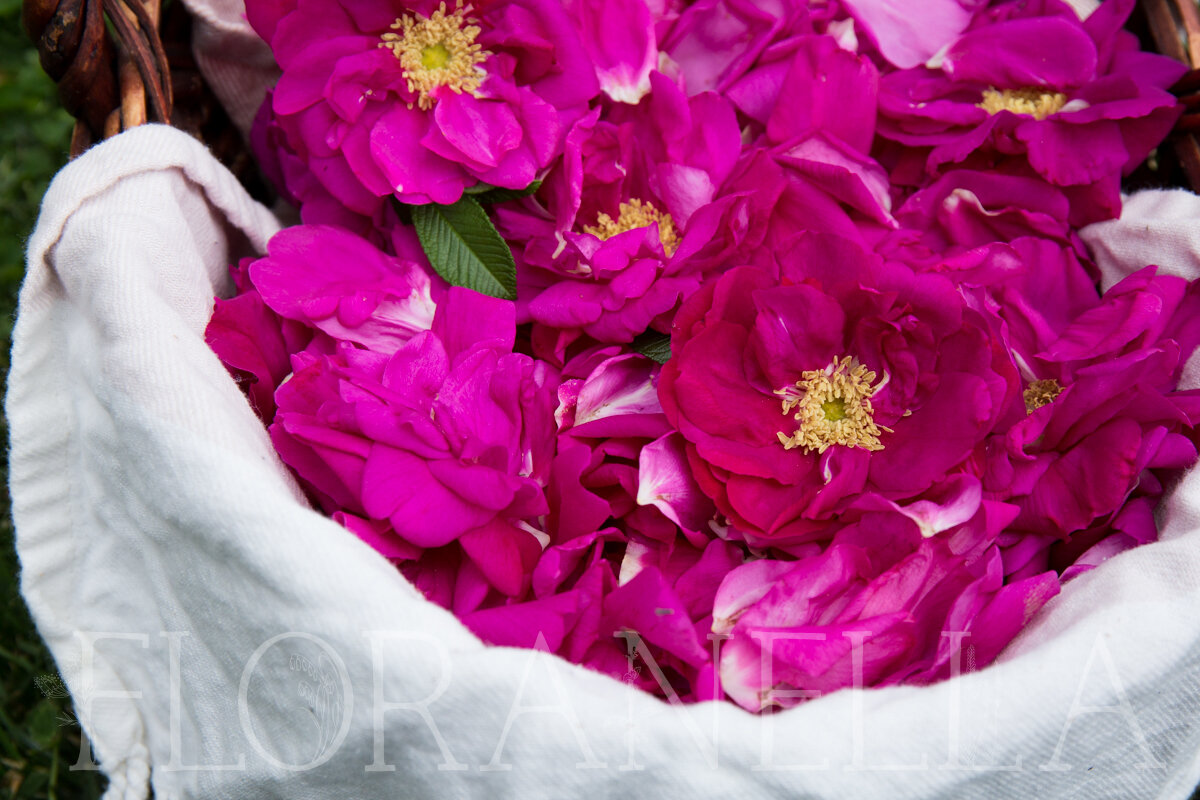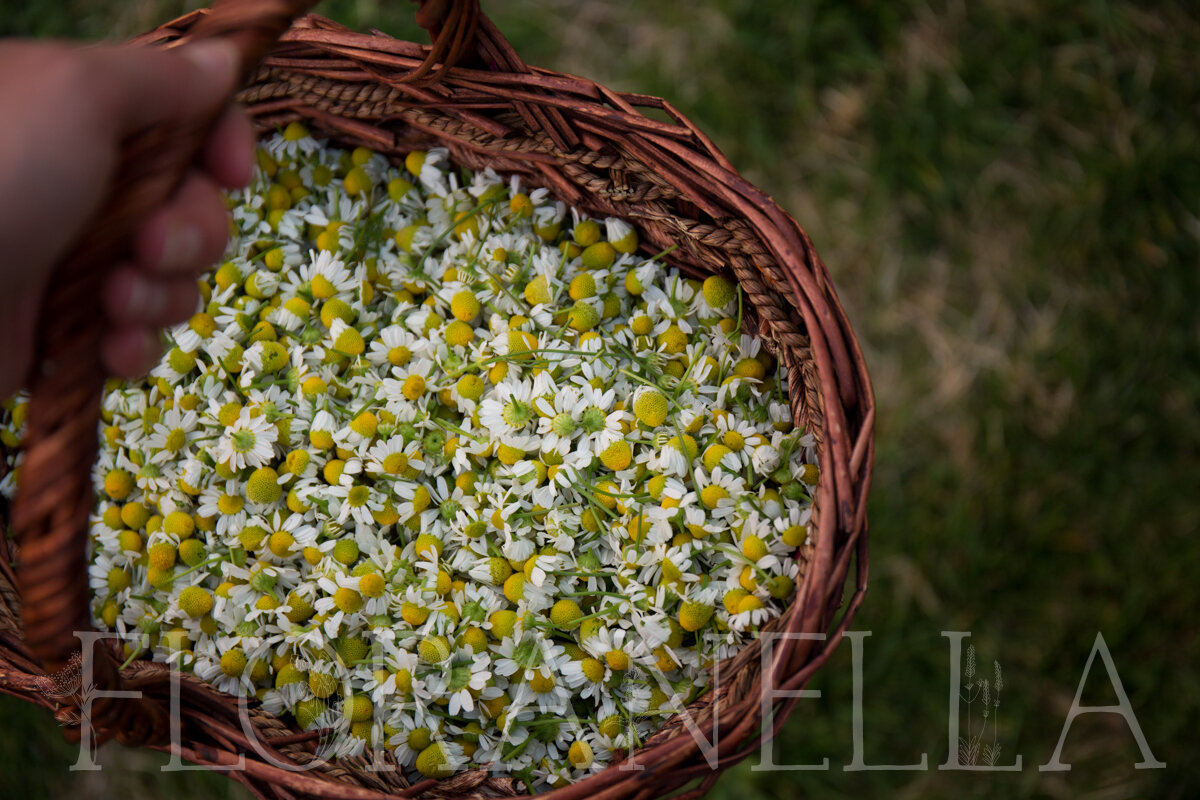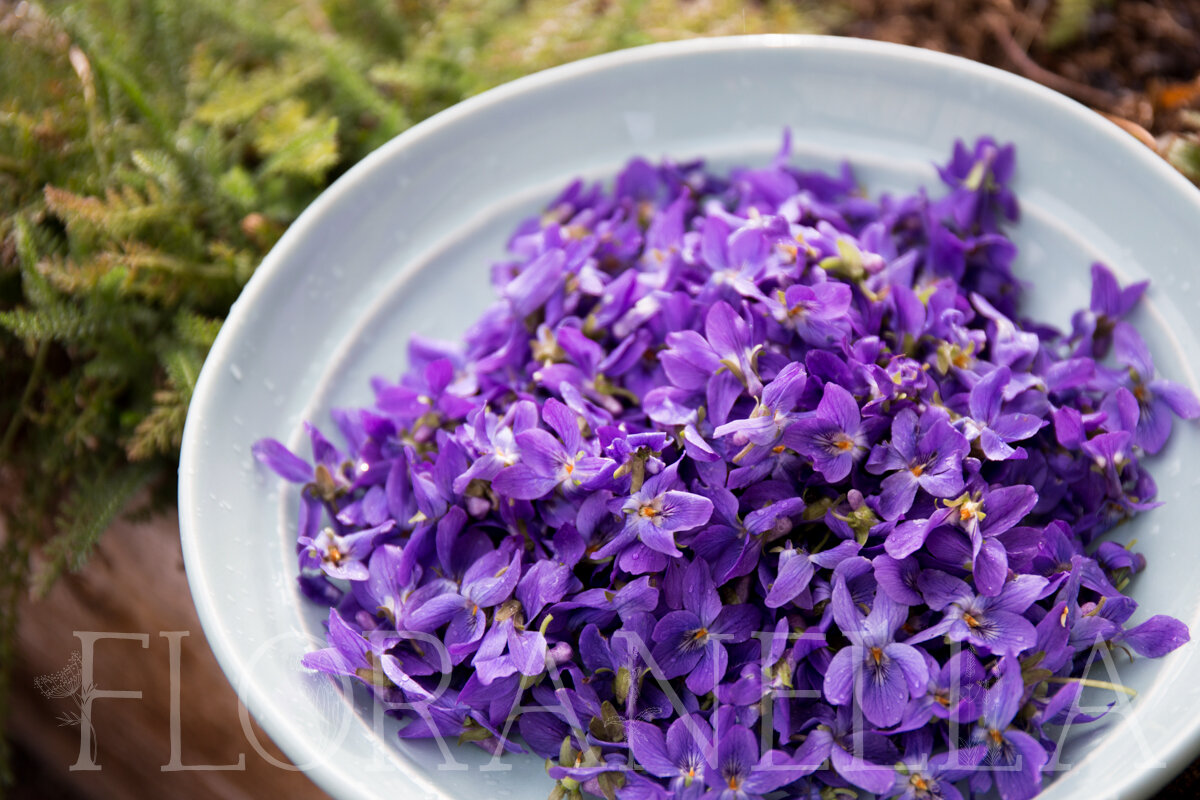14 Must-Grow Herbs In My Garden
I love gardening. I find it therapeutic to spend time working with living plants in the company of the native bees, butterflies, and neighborhood birds that visit my garden. It also allows me to have access to high quality food and herbs for my kitchen and apothecary. Every year, I sit down to plan out what I want to grow and where I want it to go in the garden whilst I think about which new things I want to try. But I have a few favorites that I will probably always grow - my must-haves. They are easy-to-grow staples in my garden and I love having them around. Since many of them are currently sprouting and sending out new leaves, I thought I would share them with you today. Perhaps you will want to grow them this year too!
Roses
My favorite roses to grow for the apothecary are R. rugosa, gallica, damascena, centifolia, and other fragrant, old rose species. The newer hybrids are not as medicinal, though they are still edible if grown without chemicals. The R. gallica, damascena and centifolia species are usually once-blooming, which means that they will typically bloom once in May or June and then not flower again until the next year. Rugosa roses are wonderful dual-purpose species to grow and many of them will bloom from May to October, after which they will produce edible hips that are also useful in the apothecary.
Calendula
My apothecary would not be complete without calendula. It is a delight in the garden, brightening the places where it is planted with vibrant hues of yellow and orange. It will often bloom right through the winter where I live (zone 8b), but in many places, it is grown as an annual. I grow many varieties, but the most resinous ones are the best suited for use in the apothecary. (Calendula is pictured in the first photo in this article.)
Lavender
I have always been fascinated with lavender. It's truly one of my very favorite plants. I actually collect lavender varieties and have over 100 lavender plants in my little backyard garden. If you would like to use it for both culinary and aromatherapy purposes, I recommend growing an L. angustifolia variety. They bloom earlier than the L. x intermedia hybrids, have a sweeter smell, and produce an essential oil that is much more versatile.
Did you know that we made a casual, documentary-style film about our local lavender farmers? You can watch it for free here.
Chamomile
German chamomile is my favorite chamomile to grow. It blooms quite early in the season for me and looks so cheerful throughout the spring and summer. Ours struggles a little bit in our summer heat, but it will often bloom right up until the frosts hit in the fall. Having access to fresh chamomile for teas every morning is one of Jon's favorite things about having a backyard garden. He can be found picking a few blooms for his morning brew every morning once it starts flowering.
Hibiscus
Hibiscus might be one of the most fun garden plants to grow. It looks a lot like okra as the plant is growing and its flowers are quite similar - they are in the same plant family, along with marshmallow. When the flowers drop their petals, these red calyces swell to 1-2" and are then harvested and dried for tea throughout the rest of the year. I add hibiscus to almost every tea that I make during the warmer months. It is so tasty and it turns everything a beautiful, vibrant red color.
Lemon Balm
Lemon balm will happily establish itself in your garden and continue to thrive year after year in the right conditions. Last year I grew mine in the full sun and it did quite well until late summer, but this year I am growing it in an area where it will be shielded from the heat of the afternoon sun and I expect it to do even better there. [Updated to add: the lemon balm grows just as well with afternoon shade.] It is such a low maintenance plant that just keeps giving. You can cut it back over and over and it will still keep producing. Aside from its usefulness in the apothecary, it tastes great! You can even use it in popsicles.
Sweet Violets
If you have been following along for awhile, you know that I have a special love for sweet violets. I sow more of them every year and I just cannot help but want them everywhere in the garden. When we upgrade from our urban rental home and buy our own farm, I am going to try to help them take over the world in my little patch of earth. ;) They are so lovely, have a delightful, sweet aroma, are tasty, and are also a wonderful plant ally for the apothecary.
Yarrow
Yarrow is such a useful and beautiful plant that I cannot help but want to grow it each year. I cannot tell you how many times it has come to the rescue for me when I have been working in the garden and have accidentally acquired some cut or scrape on a garden tool. The pollinators love it too, which makes it a win-win for me. You really only ever need to plant it once. It will happily spread throughout the garden and its roots can be divided in late winter to cultivate it via cuttings. Ours flowers through late fall.
Milky Oats
Milky oat remedies are made with the fresh milky tops harvested at just the right moment at just the right stage of ripeness, which means that if you really want to take advantage of this plant’s therapeutic effects, you either need to grow it yourself so you can check on it several times a day when harvest season approaches or you need to buy tinctures from companies that tincture their milky oat tops fresh at peak ripeness. This is a beautiful plant that grows easily and quickly, so I rather enjoy growing it myself. Access to the fresh milky tops allows me to make vinegar extracts as well, which is an added bonus since they are not widely available.
Tulsi
Tulsi might very well be the most fragrant plant in my garden. Just walking by it seems to send its aroma wafting on the breeze. I love watering the tulsi beds because they are so fragrant and their smell is so uplifting and sweet. I let much of my tulsi flower throughout the season because the bees love it and I will walk out each morning and pick a handful of flowering tops for my water bottle for the day. It adds such a pleasant, spicy flavor. This is one of the plants I miss the most during the winter months.
Nettles
Access to fresh stinging nettles is wonderful. I love that I can just walk out to the corner of the yard to pick some whenever I like rather than having to forage for a clean patch. They are rich in minerals, lovely when fresh, and they make such a great food herb that it is hard to resist growing them.
Plantain
Plantain is so useful in the garden that I really must have it nearby. I have used our plantain plants countless times to help relieve nettle stings, insect bites, garden accidents, and other injuries that it has become quite a necessity for me. It grows wild in a field near our house so if I did not grow it, I could still easily find it (it is quite widespread), but I really love being able to walk over to pick it from a clean place whenever I need it.
Passionflower
I would grow passionflower even if it were not useful because the plant is just so beautiful. I love looking at these intricate blooms. The honey bees here love it so much. I often find them loitering in the flowers long after all the other bees have returned home for the night. I think they love it as much as I do! It grows quickly and abundantly and will make tasty fruits if you leave the flowers on the plant.
Peppermint
There is nothing quite as yummy as freshly picked peppermint straight from the garden. I rather love it. This is another one of those herbs that is so abundant that you will have plenty to share after just your first year of growing it. It spreads so well that you have to contain it if you do not want it to completely take over everything else in your garden. I have found that my homegrown peppermint is much tastier than purchased mint. I definitely prefer it.
How about you? Which plants would make it onto your must-grow list? Let me know in the comments below. I would love to hear!
Much love,
Erin
About the Author
Hi there, I’m Erin! I am the main instructor here at Floranella. I am a clinical herbalist, aromatherapist, artisan distiller and organic gardener based in the Pacific Northwest. Here at Floranella, I teach people how to work with plants safely and effectively from the garden to the apothecary. Thanks for being here! I’m glad you stopped by.















